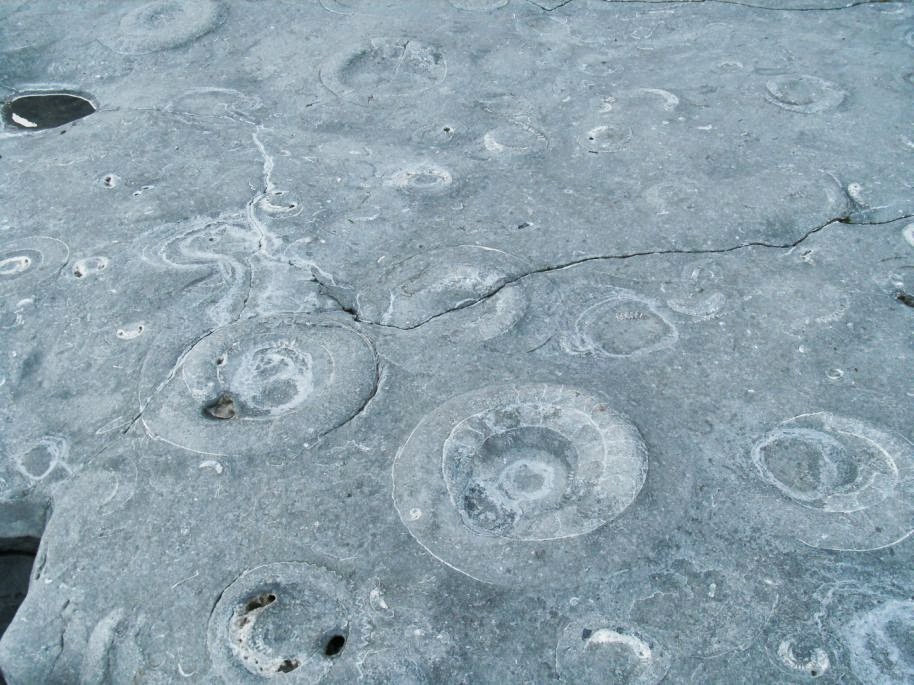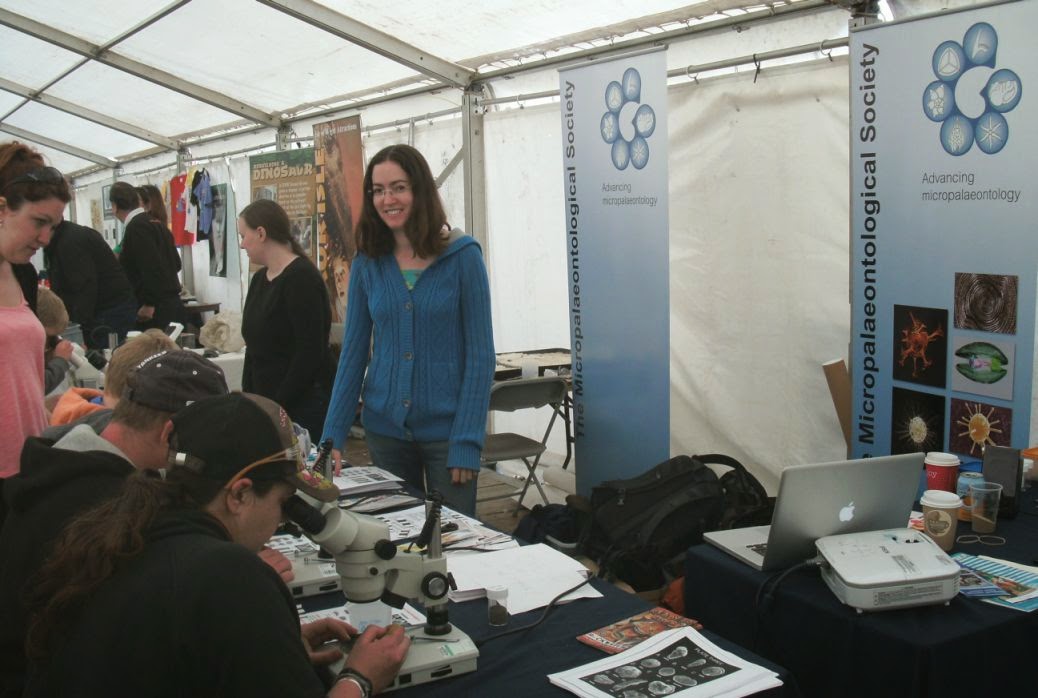It’s that special time of year again… the LymeRegis Fossil Festival! Last weekend I was at the festival helping on the Microfossil Discovery stall run by TheMicropalaeontological Society. It was lovely to be there and talk about fossils (and microfossils) with children, parents and members of the public. Everyone was so excited to be in Lyme Regis, centre of the fabulous Jurassic Coast.
On our stall we had real sieved residues of the local Gault Clay and Oxford Clay for people to find ostracods and foraminifera in. If they were keen, they could then pick out some specimens and take them home. For younger children we had a fossil excavation area with a model plesiosaur encased in cement for them to dig out. And we showed a video of a recent IODP expedition to illustrate how foraminifera are useful in interpreting past climate change. We met a lot of local people who have their own fossil collections at home and even their own microscopes.
On the team were Tom Dunkley Jones, Jeremy Young, Catherine, Michaela and myself from The Micropalaeontological Society. And Lois, Louanne, Sally and Dim of the Buckland Club and Natural History Museum, plus Joe, a young volunteer who traveled all the way from East Sussex. The weekend taught me that you are never too young or old to enjoy fossils!
A real highlight was explaining to a parent and his son about my job working on the TW:eed Project, when he asked ‘what are microfossils used for?’. They were fascinated to hear about tetrapods and how we can use microfossils present in the same sediments to work out the palaeoenvironment. He said to his son ‘did you hear that? That’s amazing! You could be a micropalaeontologist when you are older!’.
Here are some photos from the weekend.

|
|
The Micropalaeontological Society’s Stall was very popular with all visitors
|

|
|
The Ammonite Pavement on Monmouth Beach near Lyme Regis
|
Carys


To tell the truth, I'm so fascinated to hear about tetra-pods and how we can use micro fossils present in the same sediments to work out the palaeoenvironment. This is a very interesting subject for a discussion, by the way! Click on proof-reading.services video poetry scholarship to get your essay done by a pro!
Reply